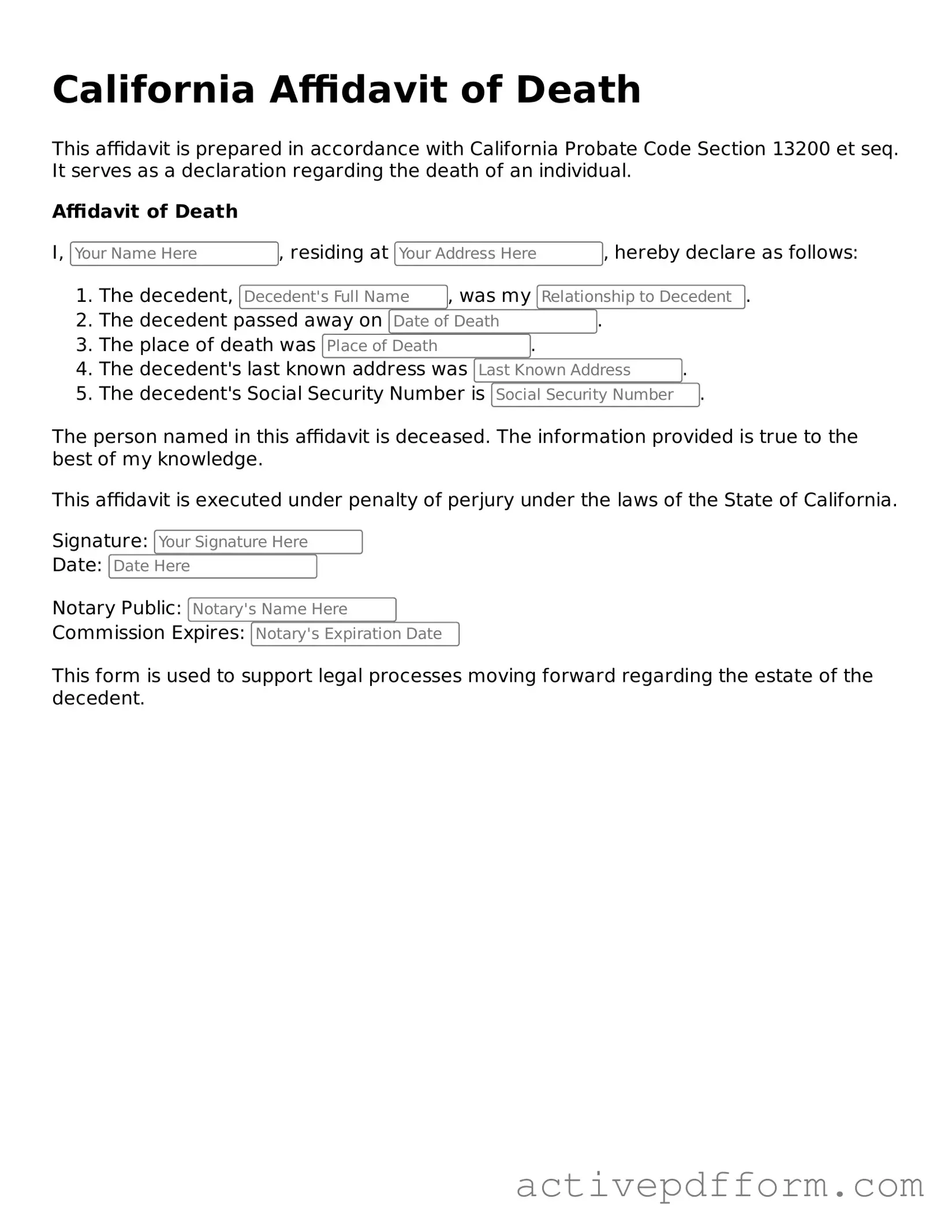What is a California Affidavit of Death?
The California Affidavit of Death is a legal document used to officially declare the death of an individual. It serves as a formal acknowledgment of the death and is often required to settle the deceased's estate, transfer property, or manage financial accounts.
Who can file an Affidavit of Death in California?
Generally, any interested party can file an Affidavit of Death. This may include family members, executors of the estate, or individuals with a legal interest in the deceased’s property or affairs.
What information is required on the Affidavit of Death?
The form typically requires details such as the deceased's full name, date of death, place of death, and the relationship of the affiant (the person filing the affidavit) to the deceased. Additional information may include the deceased's last known address and any relevant legal documents.
Is the Affidavit of Death filed with the court?
No, the Affidavit of Death is not typically filed with the court. Instead, it is usually recorded with the county recorder's office or presented to financial institutions or other entities that require proof of death.
What is the purpose of filing an Affidavit of Death?
The primary purpose is to provide legal proof of an individual's death. This document helps facilitate the transfer of assets, settle debts, and manage the deceased's estate efficiently.
Can I complete the Affidavit of Death myself?
Yes, individuals can complete the Affidavit of Death without legal assistance. However, it is advisable to ensure all information is accurate and complete to avoid any potential issues during the estate settlement process.
Are there any fees associated with filing the Affidavit of Death?
There may be a fee for recording the Affidavit of Death with the county recorder's office. The fee varies by county, so it is recommended to check with the local office for specific costs.
What happens if the Affidavit of Death is not filed?
If the Affidavit of Death is not filed, it may lead to complications in settling the deceased's estate. This could delay the transfer of assets, create issues with financial institutions, or hinder the resolution of any debts owed by the deceased.
Is there a deadline for filing the Affidavit of Death?
There is no strict deadline for filing an Affidavit of Death in California. However, it is advisable to complete the process as soon as possible to avoid complications in estate management and asset transfer.
What should I do if I need help with the Affidavit of Death?
If assistance is needed, consider consulting with a legal professional or a document preparer who specializes in estate matters. They can provide guidance and ensure that the affidavit is completed correctly.
